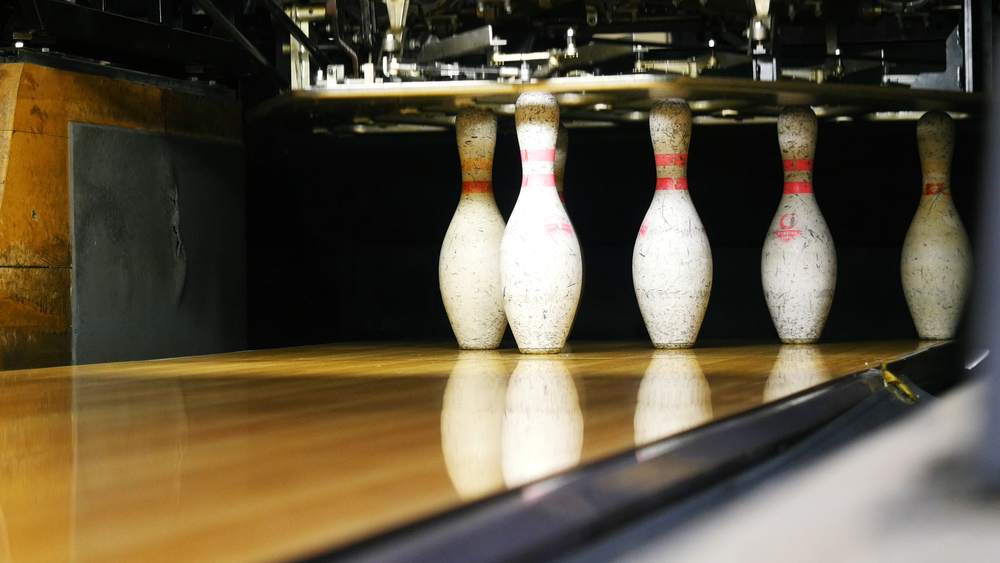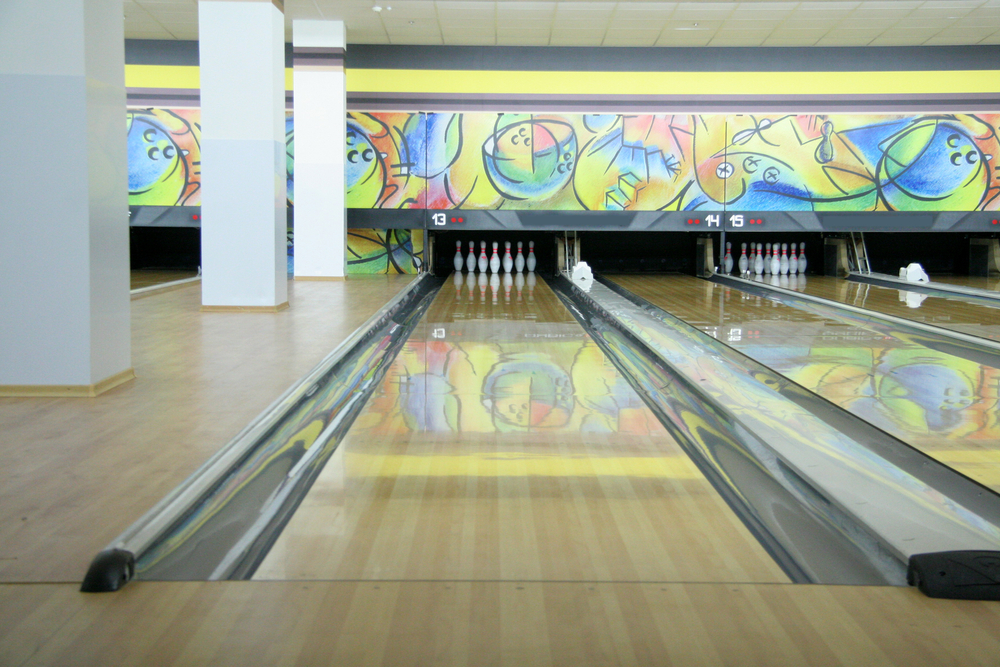
When you think about it, it's pretty amazing that bowling floors don’t break. After all, they have to withstand a constant onslaught of heavy bowling balls being thrown at them, day in and day out.
How do bowling floors not break? How do they stay in one piece? That's a good question, and we'll tell you exactly how they do it in this article.
Contents
How Do Bowling Floors Not Break
For starters, bowling floors are extremely tough and resilient. They are usually made of wood or synthetic materials. Here's what you need to know about these flooring options:
Wooden Bowling Lanes
Some bowlers believe that only the most upscale bowling alleys use natural wood for their lanes, but that's not true. Many bowling alleys have wooden lanes; sometimes, the wood extends throughout the bowling alley.
The most common woods used in bowling alley flooring include maple or pine. Many bowling alley managers choose to install pine for the lane and hard maple for the landing zone, approach, and pin deck.
Pine isn’t as susceptible to shrinking from changes in moisture or temperature as other types of wood can be, making it a stable choice for any lane. On the other hand, maple is durable and can withstand just about anything the average bowler can throw at it, making it a solid choice.
Wooden bowling lanes can be expensive and are not always practical for every alley.
Synthetic Bowling Lanes
Your average local bowling alley will likely have floors made of synthetic materials. These planks may look like wood, but that’s where the similarities end.
Synthetic lanes are usually made of fiberglass. It can withstand water damage, fire, heavy foot traffic, and damage from stray ball hits. Bowling alley managers also love that fiberglass isn’t prone to warping or cracking, a common problem with some types of natural wood flooring.
Overlays for Floor Repairs
Another option for bowling alley owners is installing overlays - this is ideal for those who need to fix a portion of the floor and are on a budget. It involves installing synthetic materials over the existing wooden or synthetic flooring.
How Thick Are Bowling Alley Floors?
Now that you know what bowling alley floors are made of, it's natural to wonder how thick they need to be to withstand the heavy daily wear they incur. The average thickness for most bowling lane flooring is about 2 ½ inches.
If you can’t visualize what 2 ½ inches look like, it’s worth pulling out a ruler to get an idea. Considering what a lane goes through daily, it’s pretty impressive that the flooring doesn’t need to be any thicker!

Can You Break a Bowling Lane?
Yes, you can break the floor of a bowling lane. But to crack, splinter, or dent the floor, you’d have to throw some pretty heavy balls with a lot of force.
For example, if you drop a bowling ball from the second floor onto the lane, there’s a good chance you’d break the floor. The same goes for if you slam a bowling ball on the lane in anger. We don’t recommend doing either of these things, but it is possible to break a bowling lane floor if you try hard enough.
Over the last 50 years or so, the wood and synthetic materials used in modern bowling facilities have set a standard of strength not seen in older lanes. It’s nearly impossible in most cases for the average bowler to break those floors when bowling regularly.
How to Maintain Bowling Floors
It’s worth noting right off the bat that wood floors require more maintenance than synthetic flooring. But, of course, if a lane owner wants wooden lanes and has the resources to maintain them, that's great!
Natural wood adds a lot of charm and value to the bowling alley.
While most floors in a household or even commercial facilities just require a simple cleaning now and then, bowling lanes require a bit more care. Here are some of the steps floor maintenance pros recommend to keep lanes clean, shiny and attractive:
- Dust the lanes. Dusting makes a world of difference for both wood and synthetic floors. Depending on the amount of debris that needs to be removed from a lane, either a duster or liquid lane cleaner can be used. This should be enough to remove all of the dirt that may be there. A combination of both cleaners may also be used.
- Sweep or dust the approach. While it tends to require simple sweeping or dusting as opposed to the deeper cleaning required for the actual lane, the approach area (the area where bowlers stand to take their shots) should also be kept clean. If neglected, the floors may end up with a buildup of scuff marks, spills, and particles that can be transferred to the lane itself.
- Condition the lanes. Lane oil or conditioner will help to protect the surface of the lane throughout the day. Pros recommend applying the conditioner around the same time each day for consistent protection.
- Don’t neglect the pin deck area when maintaining your flooring. While the finish on these areas is made to withstand a ton of impact, residue and other particles should be cleaned from the area regularly to help preserve its integrity.
- Deep clean the lane as needed. When the oil and debris on the lane reach a certain point, it’s easy to tell that it’s time to give the lane a deep cleaning. This usually happens every week or so, but it depends on how often the lanes are used.
- Repair as needed. It’s essential not to ignore any damage that may occur to the floor of a lane. Cracks, chips, and other damage should be repaired as soon as possible to prevent further damage and ensure the lane is safe for use.
Lane maintenance is a huge part of running a bowling alley, and it takes a lot of skill and knowledge to be good at it. Because of the sheer amount of work involved, bowling alley managers will typically hire a maintenance service to care for their lanes, from cleaning to periodic repairs.

Can the Flooring Type Impact a Bowler’s Game?
The type of flooring used in a bowling alley can have an impact on a bowler’s game, but it’s typically not a significant one. In most cases, it’s the lane conditions that have the most significant impact on a player’s game.
That being said, there are some subtle differences between wood and synthetic flooring that can affect a player’s game. For example, wood floors are more likely to show wear and tear over time, which can impact the way the ball rolls.
Synthetic floors, on the other hand, are designed to be more durable and consistent, so they may provide a slightly more predictable surface for the ball to roll on.
The most influential factor in a bowler’s game (when it comes to the lanes) is the oil pattern used. So, there's no need to worry too much about the type of flooring when choosing a bowling alley.
Related Articles
So, there you have it - bowling alley floors are able to withstand a lot of abuse before breaking. And with the proper maintenance, they can stay in great condition for many years.
Whether you're an aspiring bowling alley owner or a curious bowler, we hope that you were able to find all the information you were looking for.
Good luck in your future bowling (or bowling alley ownership) endeavors!
Kira Byrd, a Certified Fraud Examiner, holds a B.S. in Accounting from the University of Alabama at Birmingham. With a passion for bowling from her childhood, Kira has poured her expertise and personal experiences into creating and nurturing Bowling For Beginners. Kira's mission is to meet new bowlers where they are and guide them toward consistently achieving higher scores. With a focus on skill development and strategic techniques, she empowers readers to take control of their game and unlock their true potential.
Bowling For Beginners embodies strict editorial integrity, ensuring reliable and unbiased information. Kira's commitment to delivering valuable insights and practical strategies is reflected in every article. Here's an explanation of our editorial policy and how we get money.





